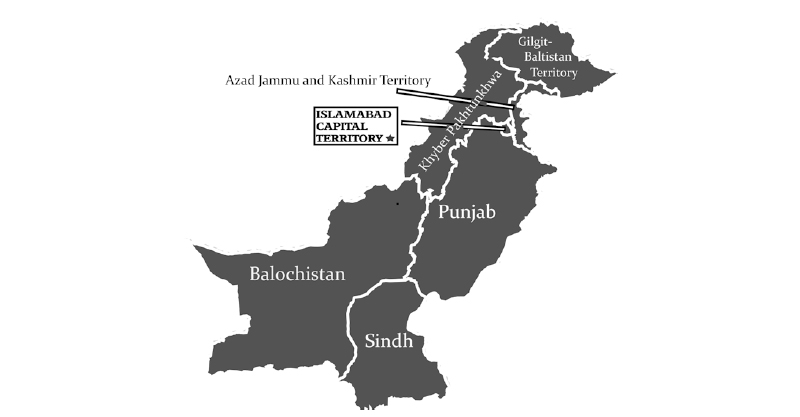
History
Pakistan – an ethnically and linguistically diverse country – has ancient roots as a socio-political entity encompassing the Indus Valley. It was brought under centralized rule for three distinct eras, the third a period of rule by the British between 1857 and 1947. Pakistan became an independent nation in 1947 with the separation of British colonial India into the Muslim nation of Pakistan and the predominantly Hindu Republic of India. These two states fought wars in 1947-48 and 1965 over the Kashmir region, which both claimed as sovereign territory and continue to do so today.
The first Pakistani Constitution was adopted in 1956 and then abrogated by the military in 1958. The second Pakistani Constitution was adopted in 1962, but once again abrogated by the military in 1969. Pakistan’s third Constitution was adopted in 1973 by the first directly elected Parliament. This constitution enshrined a federal structure.
A major development in federalism in Pakistan was the 18th Amendment to the 1973 Constitution (the constitutional reform package), which was passed unanimously by the National Assembly on April 8, 2010. This amendment dramatically reduced the power of the president. It returned functions to Parliament and gave more autonomy to the provinces. The 18th Amendment was approved by the Senate on April 16, 2010 and became an act of parliament.
Structure
Pakistan’s federal parliamentary republic consists of: four provinces; one federal capital territory; two self-governing administrative territories; and a unit of semi-autonomous federally-administered tribal areas. The four provinces are Punjab, Sindh, Khyber Pakhtunkhwa, and Balochistan. The Islamadad Capital Territory covers the capital city, while the Federally Administered Tribal Areas in the northwest includes the Frontier Regions with Afghanistan. The two self-governing administrative territories of Azad Kashmir and Gilgit-Baltistan form part of the disputed Kashmir region. The local governance system of Pakistan consists of three tiers: districts, tehsils (sub-districts), and union councils. Each tier has elected bodies. In total, there are approximately 149 districts, 588 tehsils, and several thousand union councils.
Pakistan has a hierarchically structured court system with two classes of court: the superior and the subordinate judiciary. The superior judiciary is entrusted with preserving, protecting, and defending the constitution and is comprised of the Supreme Court of Pakistan, the Federal Shariat Court, and five High Courts. The Supreme Court stands at the apex, and one high court serves each province, with the last serving the Islamabad Capital Territory. The disputed regions of Azad Kashmir and Gilgit-Baltistan have separate court systems. The subordinate judiciary consists of civil and criminal district courts.
The largest federal challenge for Pakistan, a geographically and demographically diverse nation, is to empower its provinces and tribal areas while maintaining a united federal republic.

